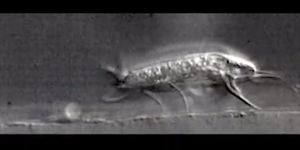Synthetic Cells Help Researchers Learn More About the Cell Membrane
Our bodies are made up of organ systems, and within them are trillions of cells and their associated molecules, which all have special roles in a complex web of functions. Those cells, which are encased by their membranes (described in the video below), must all be able to send signals to one another as a way of coordinating and communicating. Molecules on the cell membrane and channels through it play important roles in that cell-to-cell signaling. Scientists have now learned more about how the physical structure of a cell's membrane impacts the way the cell interacts and communicates with other cells.
Sugar molecules, the researchers found, are involved in the interactions between cells; sugars act as signals that cells and proteins use for communication. The findings, by scientists at the University of Pennsylvania, Temple and Aachen Universities, have been reported in the Proceedings of the National Academy of Sciences.
“Ultimately, this research is about understanding how cell membranes function,” said Virgil Percec, research leader at Penn's Department of Chemistry. “People try to understand how human cells function, but it is very difficult to do. Everything in the cell is liquid-like, and that makes it difficult to analyze it by routine methods.”
To take pictures of cells at the molecular level, scientists have used diffraction methods that are difficult to apply to a structure that has fluidity, like the cell membrane. Other methods like fluorescence microscopy label individual parts of cells after lots of processing, and there are limits to the resolution that can be obtained. In this work, the researchers wanted to look at membranes in whole, intact cells. They employed a technique called atomic force microscopy, which is described in the video.
The lead author of the study and a former member of the Percec lab, Cesar Rodriguez-Emmenegger, used synthetic cells to generate very high-resolution images, revealing structures that were under a nanometer in width. The synthetic cells were generated from self-assembling macromolecules.
The team then used computational tools to model how structure related to function in the cell membrane. They were able to determine that when sugar concentrations on the surface of a cell membrane are low, there is an increase in reactivity with proteins that are on other cell’s membranes.
Percec is interested in finding out how to manipulate cell-to-cell signaling and function, which is connected to how ongoing work on human and bacterial cell hybrids. This work may also aid in the development of synthetic materials for use in medicine.
“We approach problems that other people say there is no solution for. You cannot make a big breakthrough overnight,” said Percec. “All these people on our team are gifted and have the machinery needed to solve the various problems along the way that bring the story together.”








